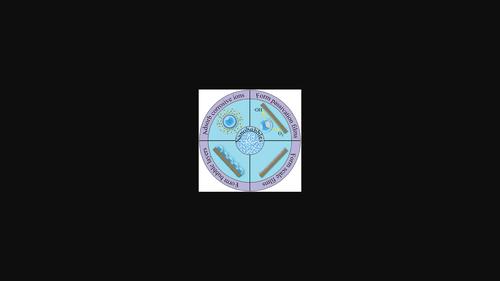Particle Properties of Air Nanobubbles and Their Inhibition Mechanism on Brass Corrosion in Recirculating Cooling Water: Effects of Concentration Ratio and Flow Velocity
IF 2.7
4区 材料科学
Q3 CHEMISTRY, PHYSICAL
引用次数: 0
Abstract
The corrosion inhibition performance of air nanobubbles (A-NBs) is expected to address the environmental problems arising from chemical corrosion. In order to regulate the corrosion inhibition performance of A-NBs, the particle characteristics of A-NBs in flowing composite salt solutions are investigated, and the corrosion inhibition effect of A-NBs under different concentration ratios and rotational speed of simulated circulating cooling water is studied. High salt concentrations significantly reduced the particle size, concentration, and zeta-potential value of A-NBs, thus reducing the stability of A-NBs. The flow velocity has a slight effect on A-NBs. The results of the weight loss and electrochemical method showed that A-NBs achieved the highest corrosion inhibition rate of 55% under a concentration ratio of 1.5 and a rotational speed of 100 r min−1. The surface characterization of brass specimens revealed that A-NBs facilitated the formation of Cu2(OH)2CO3 passivation film, calcium carbonate scale film, and a layer of bubbles on the surface of brass, which subsequently mitigated the erosive impact of the fluid. A-NBs can adsorb cations and thus reduce the concentration of corrosive ions. However, the increase in concentration ratio and rotational speed impeded the formation of the bubble layer and passivation film.

空气纳米气泡的颗粒特性及其对循环冷却水中黄铜腐蚀的抑制机制:浓度比和流速的影响
空气纳米气泡(A-NBs)的缓蚀性能有望解决化学腐蚀带来的环境问题。为了调节 A-NBs 的缓蚀性能,研究了 A-NBs 在流动的复合盐溶液中的颗粒特性,并研究了 A-NBs 在不同浓度比和模拟循环冷却水转速下的缓蚀效果。高浓度盐明显降低了 A-NBs 的粒径、浓度和 zeta 电位值,从而降低了 A-NBs 的稳定性。流速对 A-NBs 的影响较小。失重法和电化学法的结果表明,在浓度比为 1.5、转速为 100 r min-1 的条件下,A-NBs 的缓蚀率最高,达到 55%。黄铜试样的表面表征表明,A-NBs 能促进黄铜表面形成 Cu2(OH)2CO3 钝化膜、碳酸钙鳞片膜和气泡层,从而减轻流体的侵蚀作用。A-NB 可以吸附阳离子,从而降低腐蚀性离子的浓度。然而,浓度比和转速的增加阻碍了气泡层和钝化膜的形成。
本文章由计算机程序翻译,如有差异,请以英文原文为准。
求助全文
约1分钟内获得全文
求助全文
来源期刊

Particle & Particle Systems Characterization
工程技术-材料科学:表征与测试
CiteScore
5.50
自引率
0.00%
发文量
114
审稿时长
3.0 months
期刊介绍:
Particle & Particle Systems Characterization is an international, peer-reviewed, interdisciplinary journal focusing on all aspects of particle research. The journal joined the Advanced Materials family of journals in 2013. Particle has an impact factor of 4.194 (2018 Journal Impact Factor, Journal Citation Reports (Clarivate Analytics, 2019)).
Topics covered include the synthesis, characterization, and application of particles in a variety of systems and devices.
Particle covers nanotubes, fullerenes, micelles and alloy clusters, organic and inorganic materials, polymers, quantum dots, 2D materials, proteins, and other molecular biological systems.
Particle Systems include those in biomedicine, catalysis, energy-storage materials, environmental science, micro/nano-electromechanical systems, micro/nano-fluidics, molecular electronics, photonics, sensing, and others.
Characterization methods include microscopy, spectroscopy, electrochemical, diffraction, magnetic, and scattering techniques.
 求助内容:
求助内容: 应助结果提醒方式:
应助结果提醒方式:


